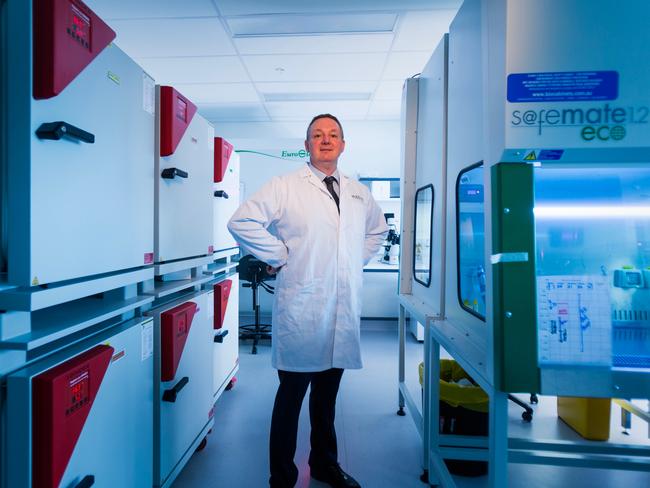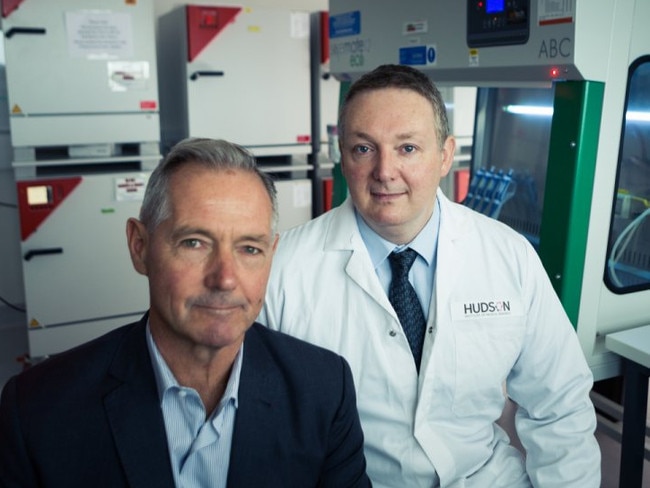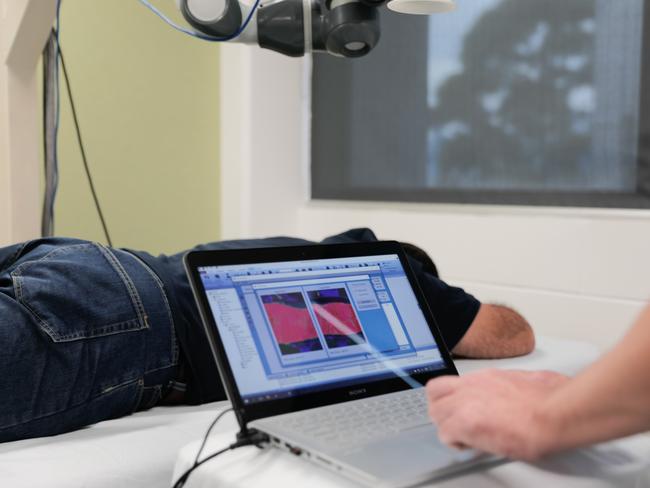Light is being used to treat cancer, neck pain and migraine
Like something out of the sci-fi series Star Trek, Australian researchers are using light to combat cancer cells and treat soft tissue injuries.

Illness
Don't miss out on the headlines from Illness. Followed categories will be added to My News.
Exclusive: Surgery, pills and injections could soon be a thing of the past with light emerging as the new way to treat cancer and soft tissue injuries without pain or side effects.
The treatments, which have been compared to the medical therapies used in science fiction series Star Trek, have undergone 500 controlled medical studies with many showing it works.
Clinical trials that use light to kill skin cancers are set to begin in Australia this year and a robot has just been developed by Melbourne’s Swinburne University that uses light to treat soft tissue injuries.
Researchers in Australia are at the forefront of these treatments that could be a new way of treating everything from migraines and bad backs to ovarian cancer.

Dr Andrew Stephens from the Hudson Institute of Medical Research in Melbourne has trialled a new photodynamic drug being developed by the Invion company IVX-PO2, a modified form of chlorophyll from plants, to kill ovarian cancer cells in petrie dishes.
“We’ve done lots of testing in the lab and it has been very effective at killing tumour cells. It’s not a case of will it or won’t it work, it’s a case of how effective it will be,” he said.
The chemical is quickly cleared from the body but it is taken up by cancer cells circulating in the blood.
When the patient is exposed to light beams of a certain wavelength the photosensitiser becomes toxic to the cancer cells.
Unlike previous such treatments this one does not require patients to be locked in a darkened room for weeks or months after treatment.

The chemical has been turned into a gel that will later this year be tested on 30 patients with basal cell carcinoma skin cancers, Invion’s CEO Dr Greg Collier said.
The gel will be applied to the cancer and then a laser light of a certain wavelength will be shone on the spot to destroy the cancer cells.
The chemical is also being turned into an intravenous formulation that can be used in experiments to see if it can treat ovarian, lung and prostate cancers.
The researchers want to test if the treatment can kickstart the body’s immune system and not only kill the cancer but prevent it returning.
“We already know it can kill ovarian cancer tumours now we want to know what the immune consequences are, can it lead to a protective response,” Dr Stephens told News Corp Australia.

At Swinburne University, Dr Mats Isaksson has developed a robot that uses light to treat soft tissue injuries and chronic pain.
The robot combines a thermal camera that identifies where there is inflammation in the body and a laser that directs light onto the spot for six minutes at a time for up to 30 minutes to relieve inflammation and control pain.
Pain Australia spokesman Associate Professor Malcolm Hogg said there were some indications light may be useful in medicine but larger randomised clinical trials were needed to prove its effectiveness.


